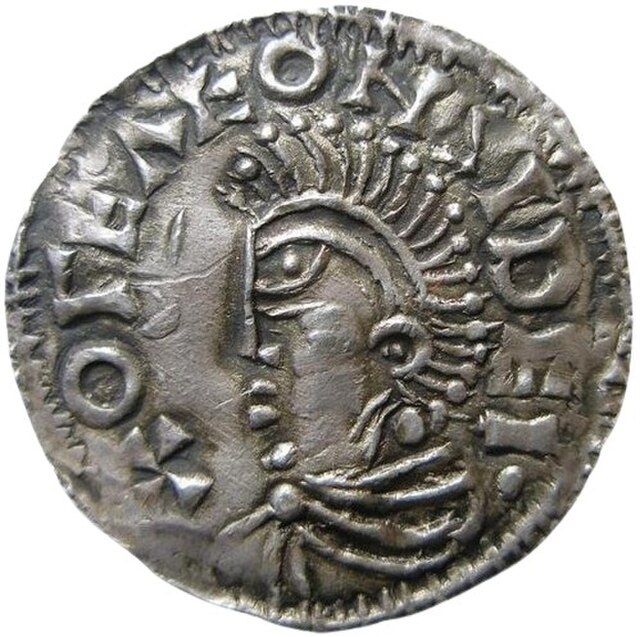The House of Munsö, also called the House of Björn Ironside, the House of Uppsala or simply the Old dynasty, is the earliest reliably attested royal dynasty of Sweden, ruling during the Viking Age. None of the names suggested for the dynasty are universally accepted and most are problematic; the name "House of Munsö" derives from a questionable and speculative theory that they would have ruled from the island of Munsö and the name "House of Björn Ironside" derives from the supposed founder of the dynasty, Björn Ironside, who is often seen as a legendary, rather than historical, figure.
Eric the Victorious praying to Odin before the legendary Battle of Fýrisvellir, as envisioned by 20th-century artist Jenny Nyström
Image: Olaf Scotking of Sweden coin c 1030
Björn Ironside, according to Norse legends, was a Norse Viking chief and Swedish king. According to the 12th- and 13th-century Scandinavian histories, he was the son of notorious Viking king Ragnar Lodbrok and lived in the 9th century, between 855 and 858. Björn Ironside is said to have been the first ruler of the Swedish Munsö dynasty. In the early 18th century, a barrow on the island of Munsö was claimed by antiquarians to be Björn Järnsidas hög or Björn Ironside's barrow.
The barrow of Björn Ironside (Swedish: Björn Järnsidas hög) on the island of Munsö, Ekerö, in lake Mälaren, Sweden. The barrow crowned by a stone containing the fragmented Uppland Runic Inscription 13.
This runestone, crowns the barrow of Björn Ironside in Uppland, Sweden. The stone is a fragment; broken pieces of the stone lie next to it.




